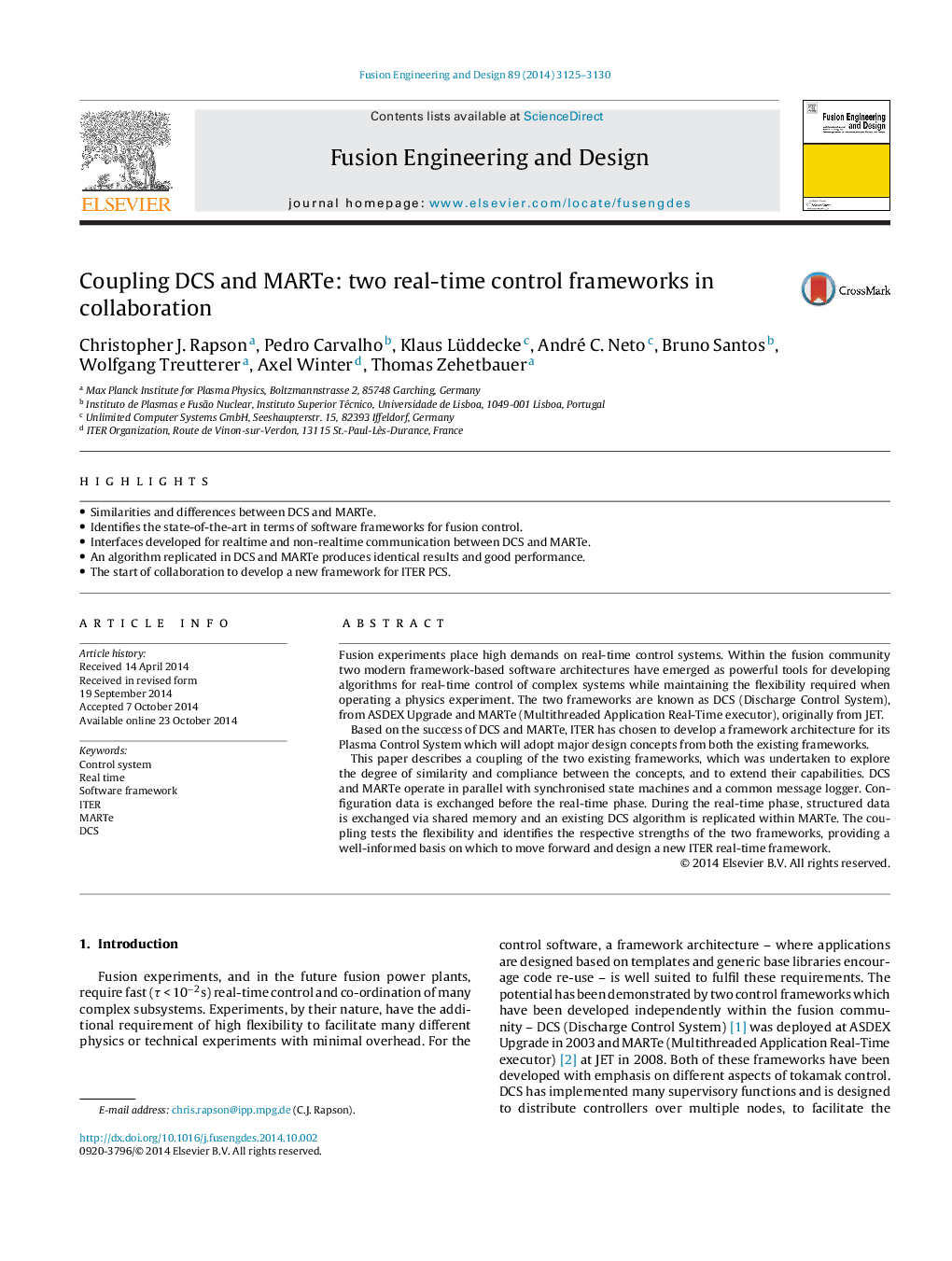| کد مقاله | کد نشریه | سال انتشار | مقاله انگلیسی | نسخه تمام متن |
|---|---|---|---|---|
| 271115 | 504988 | 2014 | 6 صفحه PDF | دانلود رایگان |

• Similarities and differences between DCS and MARTe.
• Identifies the state-of-the-art in terms of software frameworks for fusion control.
• Interfaces developed for realtime and non-realtime communication between DCS and MARTe.
• An algorithm replicated in DCS and MARTe produces identical results and good performance.
• The start of collaboration to develop a new framework for ITER PCS.
Fusion experiments place high demands on real-time control systems. Within the fusion community two modern framework-based software architectures have emerged as powerful tools for developing algorithms for real-time control of complex systems while maintaining the flexibility required when operating a physics experiment. The two frameworks are known as DCS (Discharge Control System), from ASDEX Upgrade and MARTe (Multithreaded Application Real-Time executor), originally from JET.Based on the success of DCS and MARTe, ITER has chosen to develop a framework architecture for its Plasma Control System which will adopt major design concepts from both the existing frameworks.This paper describes a coupling of the two existing frameworks, which was undertaken to explore the degree of similarity and compliance between the concepts, and to extend their capabilities. DCS and MARTe operate in parallel with synchronised state machines and a common message logger. Configuration data is exchanged before the real-time phase. During the real-time phase, structured data is exchanged via shared memory and an existing DCS algorithm is replicated within MARTe. The coupling tests the flexibility and identifies the respective strengths of the two frameworks, providing a well-informed basis on which to move forward and design a new ITER real-time framework.
Journal: Fusion Engineering and Design - Volume 89, Issue 12, December 2014, Pages 3125–3130